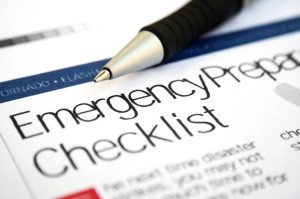Originally published in our book “Unready: To err is human – the other neglected side of Hospital Safety and Security” July, 2010 and as relevant four years later as it was on day one.
Due to length, we have broken this into two posts, of which this is the first. For context, it should be noted that this was written during the painful birth of the Department of Homeland Security. In retrospect, combining Public Health and the Non-Federal Healthcare Sector deserves questioning, especially as relates to All Hazards Security posture.
Myth: Public health and Private health care sectors – “A dynamic duo�
Reality: The All-Hazards Homeland Security Readiness and Public Health and Health Care sector lags behind most of its economic sector counterparts. The coupling of public health and private public health care providers has had its legal, ethical, moral communication and philosophical problems. In many respects, they are the “odd couple.â€
The Public Health Service with its deep orientation to preventive medicine and bureaucratic stovepipe funding (underfunding) is an unlikely partner for the bottom line oriented hospital provider sector. The assumption that the public health sector and the established, high profile, traditional “first responder community†would take the lead and coordinate committee planning with the non-federal health care provider groups and the provider groups would seek them out was naive and unfortunate.
 The Non-Federal health care provider groups were slow to be recognized as first responders/first receivers. As a consequence, the first responders funding was disproportionately distributed to public health and other seasoned first responder groups with traditional ties to existing federal and state “stovepipe funding mechanisms.†The non-federal health care national and state level trade organizations were reluctant supporters of the nation’s strategy for homeland security, as were other segments of the industry.
The Non-Federal health care provider groups were slow to be recognized as first responders/first receivers. As a consequence, the first responders funding was disproportionately distributed to public health and other seasoned first responder groups with traditional ties to existing federal and state “stovepipe funding mechanisms.†The non-federal health care national and state level trade organizations were reluctant supporters of the nation’s strategy for homeland security, as were other segments of the industry.
The initial frenzy to do their part in the larger effort slowly cooled as it become obvious that federal funds were limited. The old mantra of “unfunded mandates†filled the halls of Congress. Some preparedness funds trickled down from states, and some states felt that they were in a better position to buy these things and distribute them to their hospitals. The attempt to get hospitals NIMS compliant was a slow and painful process. Early practices of compliance “self-reportingâ€, without follow-up verifications at state and federal levels have been troublesome in that the readiness status does not reflect reality. Some health care level trade organizations openly petitioned against acceptance of preparedness funds, which had state matching fund obligations, leading them away from voluntary participation and diverting funds to other functions.
The most powerful and influential health care executive educational organization in the nation, the American College of Health Care Executives (ACHE), failed to strongly advocate for all-hazards readiness and opted to let other trade organizations pick up the gauntlet. Failure in early attempts to attract its membership into all-hazards professional education programs discouraged any meaningful future offerings. For the last four survey years, members, hospital CEOs, have shown little collective interest in all-hazards issues. Asked to identify their top financial and/or operational issues, disaster preparedness failed to make the top ten. Results in “top CEO issues 2009†found their top three issues in descending order: financial challenges 76%; health care reform implications 63%; patient safety and quality 32%, and at the bottom disaster preparedness 1%. Based on this kind of leadership apathy, how would you design your educational program?
These are not your run-of-the-mill health care executives. They are today’s hospital leaders; patients depend on them to provide for a safe health care environment, employees depend on them to keep them safe from workplace hazards, investors depend on them for fiscal stewardship, board members depend on them to protect the reputation and keep them out of jail. Communities depend on them to make the difference between life and death in times of crisis. Many communities where hospitals are dominant employers, their future economic existence depends on informed decisions and pre-planning; urban centers like New York may be able to absorb the shock of discontinued operations, but rural communities can suffer disproportionately.
 The ultimate responsibility for safety and security for all hospital stakeholders is with the hospital board. The board delegates the day-to-day operations to the administrator. In the end, the board retains the duty of care responsibility for quality and safety for all. A recent review of publications designed to alert hospital boards on serious health care quality and safety issues is a good example of denial and disinterest in all-hazards readiness. Getting the Board on Board – What Your Board Needs to Know about Quality and Safety devotes less than a page of 104 pages on emergency management. Dealing with issues of quality and safety during periods of routine care is important, but providing a measure of quality and safety during a crisis is the real test for stewardship. The book’s glossary and index are silent on the existence of a national strategy for All-Hazards health care readiness.
The ultimate responsibility for safety and security for all hospital stakeholders is with the hospital board. The board delegates the day-to-day operations to the administrator. In the end, the board retains the duty of care responsibility for quality and safety for all. A recent review of publications designed to alert hospital boards on serious health care quality and safety issues is a good example of denial and disinterest in all-hazards readiness. Getting the Board on Board – What Your Board Needs to Know about Quality and Safety devotes less than a page of 104 pages on emergency management. Dealing with issues of quality and safety during periods of routine care is important, but providing a measure of quality and safety during a crisis is the real test for stewardship. The book’s glossary and index are silent on the existence of a national strategy for All-Hazards health care readiness.
Recent publication in the industry’s Trustee magazine, which is targeted at hospital board members, has an 11-page article, “2010 AHA (American Hospital Association) Environmental Scan (Hot Topics).†Subject issues range across ten broad categories:
1. Information Technology & E-Health
2. Insurance Coverage
3. Political Issues
4. Provider Organizations & Physicians
5. Quality & Patient Safety
6. Science & Technology
7. Human Resources
8. Consumers & Demographics
9. Economy & Finance
10. Associations
It is difficult to believe that this article in a national hospital Trustee board publication did not consider all-hazards events as worthy of a discussion in an article purported to provide insight and information about market forces that have a high probability of affecting health care field.
Additional expert commentary which followed seemed satisfied that environment scan seemed comprehensive; to use their own terms, “Much has been missed ‘under the radar screen.’â€
Traveling the last mile to a viable national response of All Hazards health care readiness requires harmonizing the efforts of organizations with disparate views of personal and professional success. Traditional first responders view risk as somewhat removed from that of a chief financial officer of a local hospital, much in the same way as the nation’s health care design and construction professionals and green groups view the all-hazards issue through a different prism.
The professional health care media is not much help with changing the direction for a more robust workplace. The last three major articles on “hospitals of the future†were devoid of any concern for facility/physical protection.
The health care risk management community is in lock step with the rest of the industry. The American Society for Healthcare Risk Management (ASHRM) Risk Management Handbook for Health Care Organizations has few details on health care organizations’ expected role in All Hazards. It gives short shrift to the national response framework and the importance of homeland security presidential directives. The all-hazards threat issue rarely sees the light of day in their many educational programs and enjoys little attention in their major conference events. One would think that ASHRM would be the place to seek guidance on such issues. A very good place to start would be a conference to address, “What are the consequences of failure to prepare and respond to known threats to patient populations?â€
 We authored an article in ASHRM Journal in 2005, “Critical issues for homeland security in health care sector readiness,†and also surfaced concern over the lack of coverage for the national strategy for homeland security†in the, at that time, existing Risk Management Handbook, Fourth Edition. The Fifth Edition published in 2007 shows little improvement in content associated with national response framework or national incident management systems, which is critical to any future All Hazards health care protection. The Department of Homeland Security Risk Lexicon focuses on the management of meaning and concepts of risk and attempts to provide a single definition for each term. Some aspects of “risk†hold implicit meaning that one would knowingly, not unwittingly, risk a population to known death and injury. Is there a place in hospital stewardship to indulge in “risk tolerance,†or risk acceptance, when the acceptance of that risk is based on competing “return on investment�
We authored an article in ASHRM Journal in 2005, “Critical issues for homeland security in health care sector readiness,†and also surfaced concern over the lack of coverage for the national strategy for homeland security†in the, at that time, existing Risk Management Handbook, Fourth Edition. The Fifth Edition published in 2007 shows little improvement in content associated with national response framework or national incident management systems, which is critical to any future All Hazards health care protection. The Department of Homeland Security Risk Lexicon focuses on the management of meaning and concepts of risk and attempts to provide a single definition for each term. Some aspects of “risk†hold implicit meaning that one would knowingly, not unwittingly, risk a population to known death and injury. Is there a place in hospital stewardship to indulge in “risk tolerance,†or risk acceptance, when the acceptance of that risk is based on competing “return on investment�
The last of the 2004, 9/11 Commission recommendations were implemented through Public Law 110-53, Recommendations of the 9/11 Commission Act of 2007. The original recommendations from #26 deal with the adoption of Incident Command System (ICS) and #28 endorsing private sector adoption of the American National Standards Institute (ANSI) standards for private preparedness, including the statement: “We also encourage the insurance and credit rating industries to look closely at the company’s compliance with ANSI standards in assessing its insurability and credit worthiness. We believe that compliance with the standards should define the standard of care owed by a company to its employees and the public for legal purposes.
Private-sector preparedness is not a luxury. It is the cost of doing business in a post 9/11 world. It is ignored at tremendous potential, costing lives, money and national security.â€
We find little to no evidence that the nation’s health care insurance industry consistently factors this homeland security ideal into their hospital insurance coverage. The same may be said about the nation’s credit lending institutions, both federal and non-federal.
TO BE CONTINUED…






0 Comments